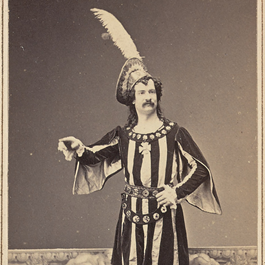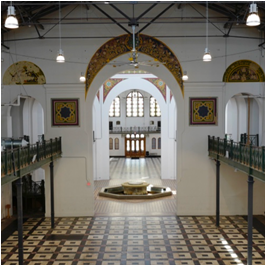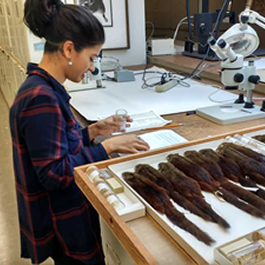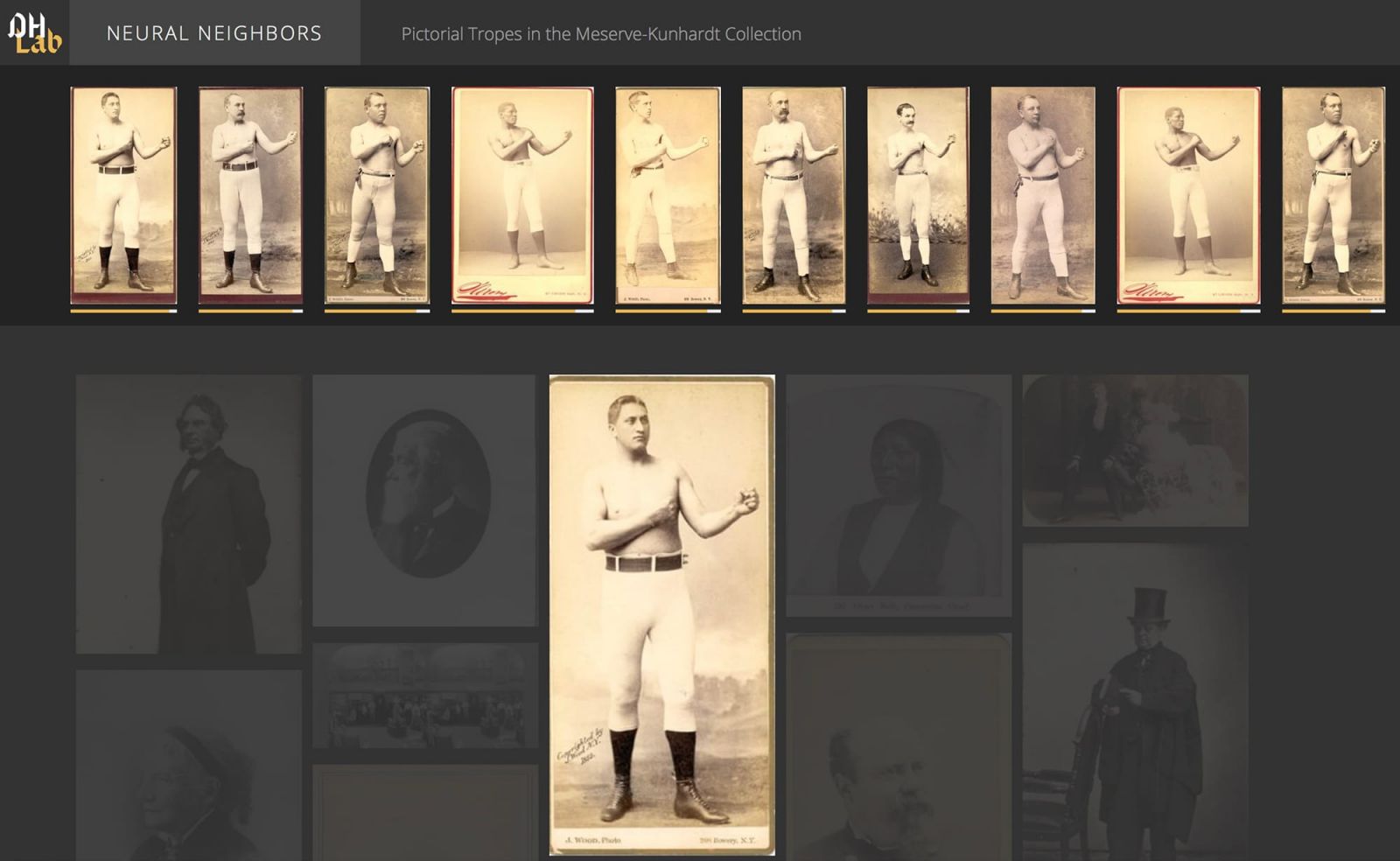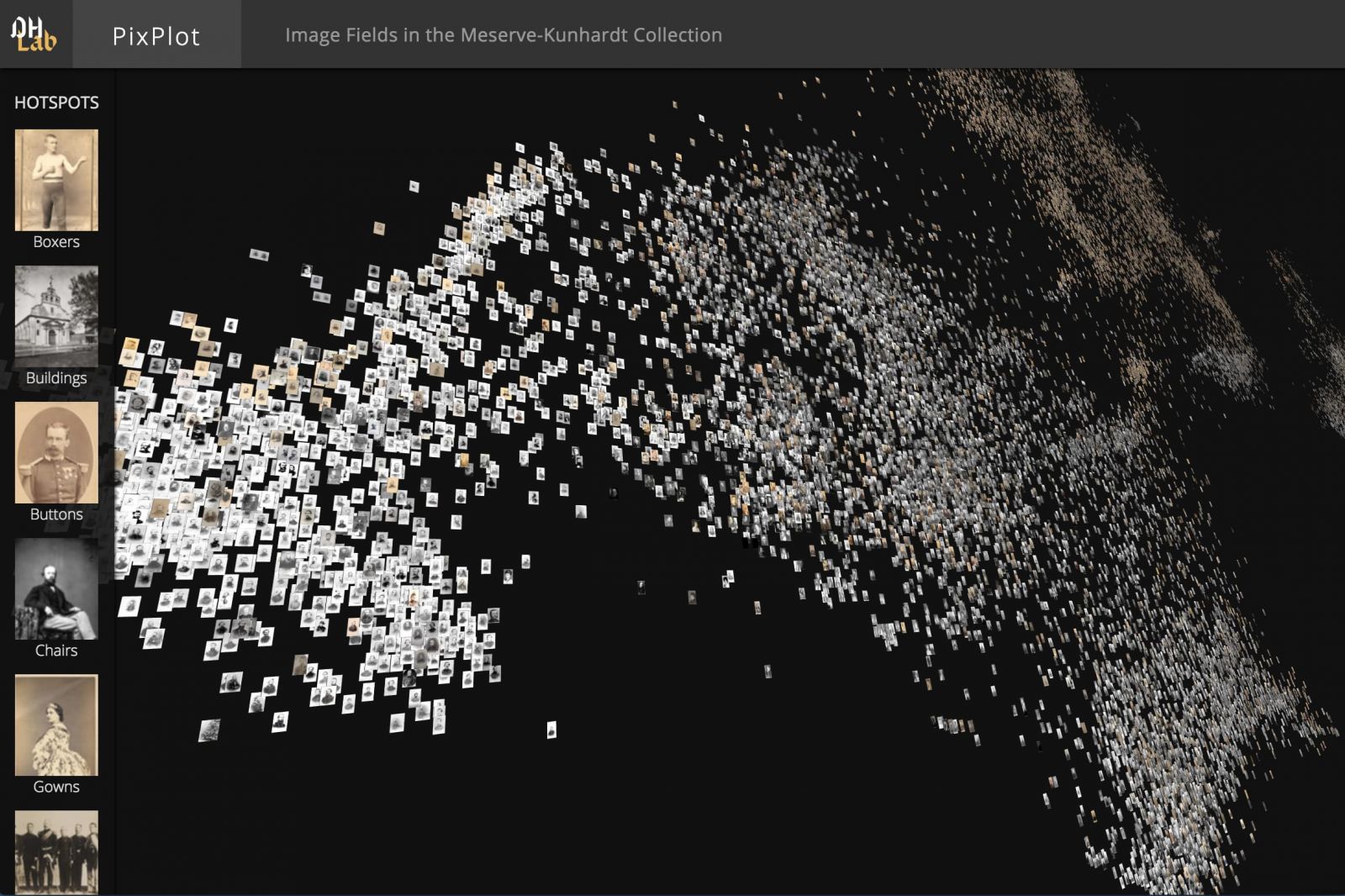Featured Projects
Ongoing and Past Projects
During Summer 2018, Yale History Professor Steve Pitti taught “American History in National Museums”, an introduction to select topics in U.S. history that encouraged critical, informed analysis on how those topics are currently represented by the Smithsonian. The course focused on the 20th century United States, on the development of the Smithsonian as an institution, and on research and interpretive practices used by museum curators. Enrolled students analyzed how museums in Washington, D.C. present national history to a diverse public and the course included a three-day trip to Washington to visit the National Museum of American History and the National Museum of African American History and Culture.
Building on a new partnership between the Smithsonian Institution and Yale University, a course taught by Laura Wexler offers a broad-based and multidisciplinary exploration of public sculpture in the United States. Using the Inventory of American Public Sculpture, housed at the Smithsonian American Art Museum, as a focal point for student digital projects, the course focuses on the scholarship of public memory, cultural heritage, conservation, and aesthetics.
The Meserve-Kunhardt Collection originated as one of the largest private collections of 19th-century photography. With over 73,000 items held by both Beinecke Rare Book and Manuscript Library and the National Portrait Gallery, the material provides rich visual documentation of United States history, especially persons, sites, and events during the American Civil War, and details the emergence of photography as a distinctive cultural practice into the early twentieth century.
In conjuction with both the Beinecke and the National Portrait Gallery, Yale’s Digital Humanities Laboratory is producing a number of “collection experiments” based on this rich archive of American visual heritage.
Neural Neighbors: Pictorial Tropes in the Meserve-Kunhardt Collection
Neural Neighbors uses two data-mining techniques to show visually-similar images to a given picture in the collection. A pre-trained Convolutional Neural Network examines each photograph and places it along 2,048 dimensions of “machine vision”, or artificial ways of seeing, derived from the penultimate layer in the captioning network. In the resulting high-dimensional space, the approximate nearest-neighbors algorithm efficiently detects the closest images and shows them on demand.
Explore Neural Neighbors yourself: hover your mouse cursor over an image to see which other pictures in the collection match it most closely. Reload the page for more images from the collection.
PixPlot: Image Fields in the Meserve-Kunhardt Collection
PixPlot is a tool to visualize tens of thousands of images from the Meserve-Kunhardt Collection all at once, giving the user a “macroscopic” perspective of the archive as a whole. Individual photographs are arranged in a kind of digital galaxy, which represents a dimensionality reduction from 2,048 vectors from the penultimate layer of a Convolutional Neural Network down to the two-dimensional space of a computer screen. Automatically-detected “constellations” of photographs are shown in a column on the left.
Explore PixPlot for yourself: Zoom in and out of the galaxy by using your scroll wheel or scroll function on your trackpad. Jump to different constellations by clicking on a representative photo in the lefthand column. And control pitch and yaw by holding your right mouse button and moving (or holding down the “D” key on your keyboard for mice without a right button.)
The Yale School of Forestry and Environmental Studies has collaborated closely with the Smithsonian Tropical Research Institute-managed ForestGEO project, a worldwide research network conducting long term studies of forest plots across the planet.
The Arts and Industries Building (AIB), located on the national mall, is the second oldest of the Smithsonian’s buildings and was America’s first national Museum. It has inspired visitors to imagine the future since opening as a showcase in 1881 for the inventions from the Philadelphia Centennial Exposition, including the steam locomotive, electric light bulb, and Alexander Graham Bell’s telephone. For the next 125 years, it housed a series of collections that illuminated the wonders of the universe for millions of people, igniting awe and discovery in technology, space travel, natural history and American history.
After closing in 2004, the building lay dormant for more than a decade. Now, after a federally-funded structural revitalization, the Smithsonian is developing plans to reopen the building as a national hub for innovative thinking and experimentation across a broad spectrum of technologies and issues. It will become a space where new generations see themselves as the innovators and problem solvers who can create the future.
In the fall of 2017, the Smithsonian partnered with the Yale University Center for Engineering Innovation and Design (CEID) to engage an interdisciplinary cohort of students in the process of reimagining the future of the Arts and Industries Building. The Smithsonian Future Project was the focus of “Making Spaces”, a course which borrows from the practices of adaptive reuse and spatial design to repurpose an existing site for a new future. Positioned at the intersection of history, technology, and design, the course explored the historical and technological significance of the ideas and innovations that the AIB house over the years. Students then worked to conceptualize new experience and exhibits for the space, exploring ways to use technology to enhance and enrich visitor engagement.
This summer, the Yale Peabody Museum of Natural History and the Smithsonian Museum of Natural History, under the advisement of Dr. Eric Sargis (Yale) and Dr. Neal Woodman (Smithsonian), co-sponsored a Yale undergraduate intern to focus on the large treeshrew (Tapaia tana) from Borneo, Sumatra, and several smaller islands in the Malay Archipelago. Tupaia tana has a complicated taxonomic history, with 15 subspecies currently recognized within this species. Previous studies have focused on pelage variation, but T. tana has never been analyzed with a modern, integrative approach that synthesizes morphometric and molecular data. Hence, the recognized subspecific variation may actually represent species-level diversity in some cases, which would have conservation implications for this poorly studied species. This project builds Drs. Sargis and Woodman’s previous studies of the common treeshrew (T. glis), a species complex in which they recognized four additional species based on our morphometric and molecular analyses. The project addresses questions such as 1) does T. tana include multiple lineages that should be recognized as distinct species and 2) how did biogeographic variables affect the divergence of populations in this taxon?
The undergraduate researcher, Maya Juman, was involved in multiple aspects of this project. At the SMNH, the Juman learned how to x-ray museum study skins and measure taxonomically informative features of hand morphology from the x-rays. At the YPM, the Juman continued to measure x-rays and learn how to statistically analyze the completed dataset. This project could lead to an expanded senior thesis project, a professional presentation at the annual meeting of the American Society of Mammalogists (at the USNM in June 2019), a peer-reviewed publication in a zoological journal, and an IUCN Red List conservation status reassessment and/or several additional species assessments.
Yale’s Gilder Lehrman Center for the Study of Slavery, Resistance, and Abolition, and the Smithsonian’s National Museum of African American History and Culture jointly organize the annual Yale Public History Institute, focused on understanding and presenting the African American experience.
